There are thousands and thousands of different tartans, ranging from well known old clan, family, and district ones, to corporate, club, and commercial ones, to light hearted and fun ones; in fact there are probably tartans for just about any and everything these days, and the list is constantly growing. To identify a mystery tartan can be somewhat challenging but what has made it even more difficult is the added complication that many of these existing recorded tartans can be woven in a range of different colour palettes.
These colourways do not actually change the name of the tartan as the threadcount – the actual formula for the pattern – remains unchanged .
This threadcount sets out the number of each coloured thread in sequence, this list forms the basis of the sett when woven, making the recognised tartan grid and squares. Each colour has been given a code letter to make it read, so that B = blue , Y = yellow , R = red , G = green , K for black , W = white N = neutral/grey , there are others but these are the main ones. The difficulty comes when you choose a colour, there is no absolute tone/shade/hue for any one them, so that the weaver can choose whichever one they like, and this then leads to the added numbers of available options from even a simple tartan.
Early woven tartans often used local plants to dye the wool and the local weaver would produce cloth that would have become recognised as local cloth, it didn’t take long with trading to increase the available colours and there is evidence of many imported dyestuffs such as madder or indigo being used in Scotland from the 1400’s. The weaving of tartan before the 1600’s was more or less a simple village activity fulfilling the need for cloth, but as the population expanded a need for greater stocks of cloth increased and weaving began to turn into a more organised affair. One business which played a hugely important part in the widespread creation of tartan was William Wilson of Bannockburn – a town which was well known for tartan weaving. They were well established by the end of 1700’s and probably had been weaving for a considerable time before. They managed to create incredible quantities of tartans and it seems that they were very influential in the naming and classification of tartans. They were of course in business to sell cloth and it’s clear that on many occasions they weren’t above creating or renaming existing tartans to sell some extra yardage. They kept good records of the colours and threadcounts for many tartans and it is thanks to them that we know of and can duplicate many 200 year tartans. Their colour palette is now known as Wilson’s colours although rarely used these days except for special orders. People are often surprised that all these tartans were dyed with natural dyes and are amazed at how strong and bold they are.

This palette was used as the basis for the most common tartan colourway in production today known as Modern. This range is now produced from aniline dyes, first discovered in 1856 which very swiftly left the natural dyes far behind. Aniline colours were much cheaper, easier to work with and much more repeatable so they replaced a lot of the slightly archaic dyeing methods and lead to a much more consistent product. Each weaver today has a slightly different version of the modern colours, but they all have strong blues and greens and a good bright red and yellow , they appear bold and striking
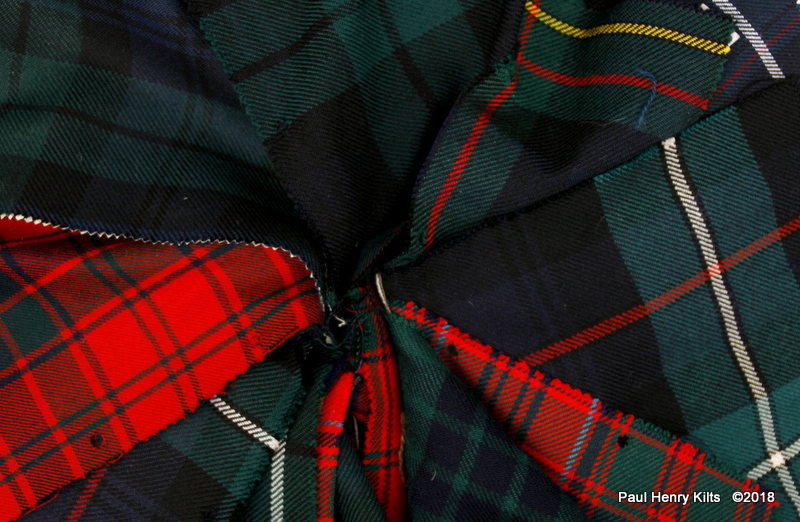
The next available colourway is known as Ancient, this colourway was created sometime around the 1930’s in an attempt to increase sales and is characterised by softer blues and greens, slightly orange reds, the overall feel is of an older cloth, which often creates confusion as it’s actually newer than the modern colours!
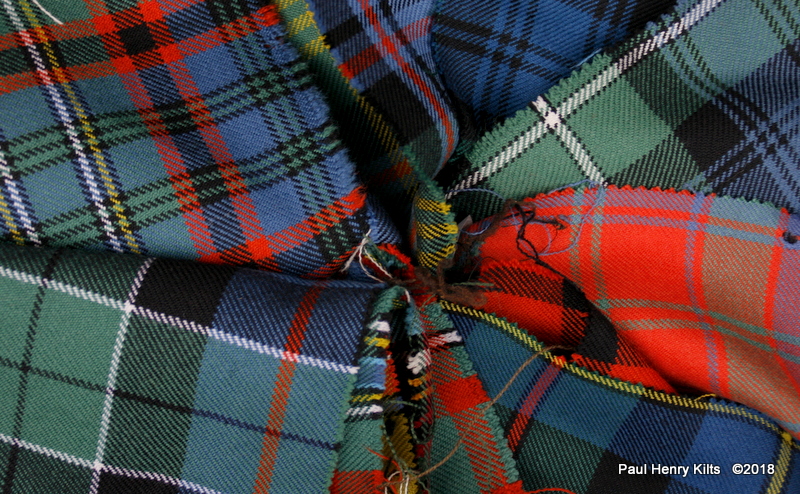
Around the same time other colourways were proposed, one called Reproduction ( largely browns and greys) was created after an idea to copy some of the recently found archaeological fabric findings on Culloden Moor, and soon after other weavers such as Lochcarron created the Weathered ( largely grey toned ) range, and House of Edgar created the Muted ( slightly faded colours) version. Each of these are readily available and have been copied by many others
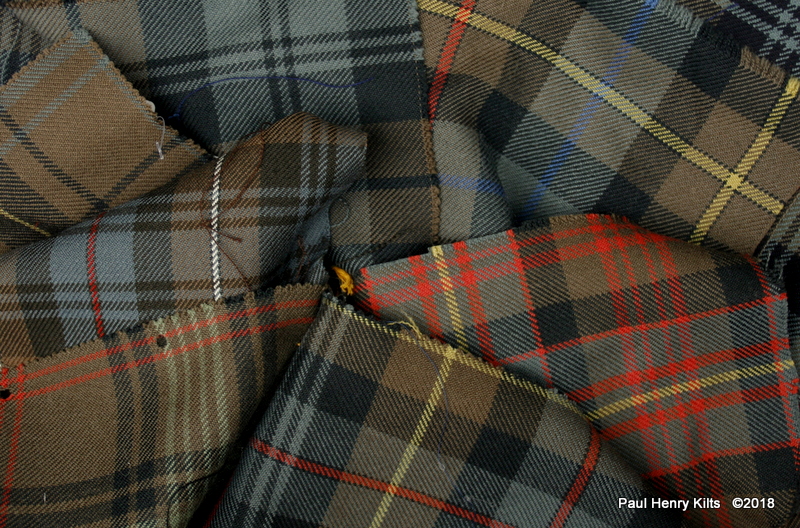
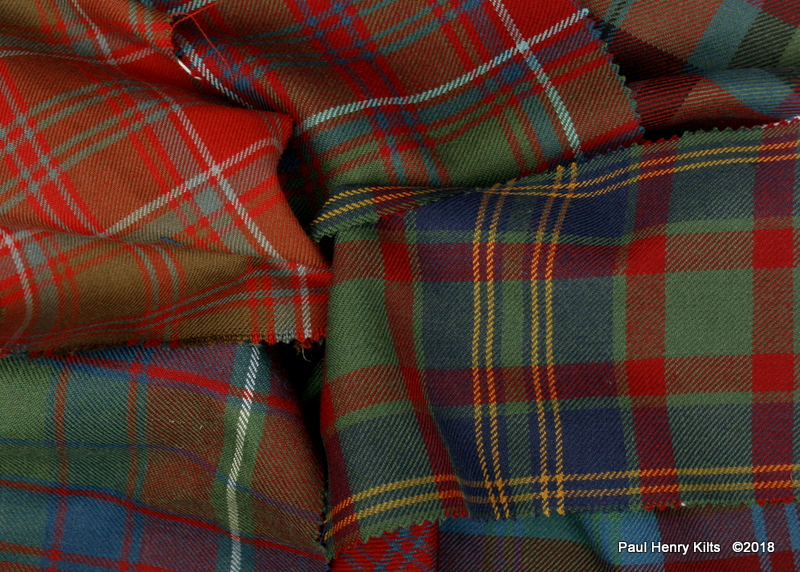
There are other variations in colourways as well, Dress tartan is characterised by using a lot of white in the design, often in the larger areas of the background, the idea was certainly known of and is seen in womans arisaids/shawls, but became much more of a Victorian theme and was often used for posh events largely by gentlemen who could show off that they didn’t have to worry about having white clothing, although today it is largely seen as more normal for ladies attire. A development of this lead to the dancing tartans which have a white base colour and often very bright colours, although seldom seen outside the world of Highland dancing.There a few “dress” tartans that don’t contain extra white but they are very rare.
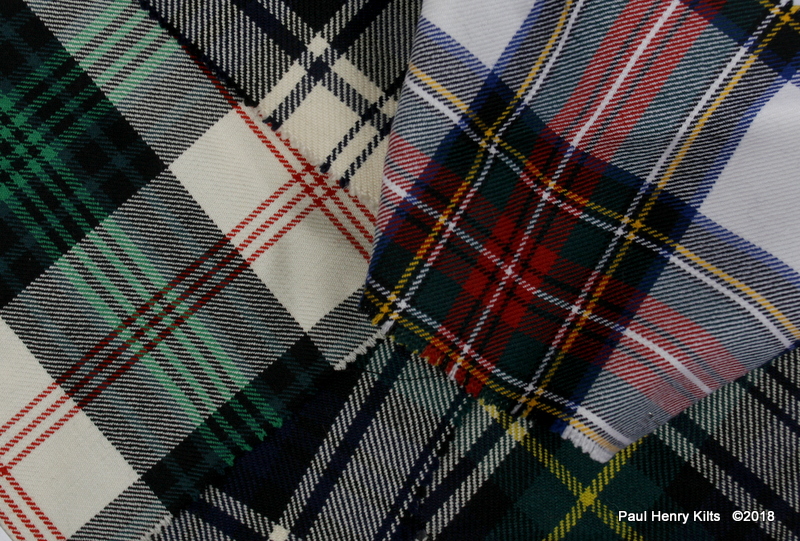
Hunting tartans fall into a slightly confusing category as well, some tartans are re-coloured with more blues and greens, again a (mistaken) Victorian idea that it would give camouflage on the hills and moors, but also some Clan hunting tartans have an entirely different sett/design that doesn’t bear any resemblance to the typical sett.
A final thought about the colourways of tartans, it is often better to use the modern/ancient/muted etc after the tartan name, so for example Buchannan ancient, rather than ancient Buchannan, as there is already an Old Buchannan tartan, which could in theory be produced in any colourway desired, so you could have Old Buchannan modern if you wished.
Most Clans have only one known tartan which would be the most usual and stocked one, but often the Chief or main family might have a variation of it with perhaps an added stripe of colour, and of course sometimes a celebration version might be produced, but these extra setts wouldn’t normally be available for the general public.
An added complication is that more recently anyone can submit a new design to be registered, and while it might not be possible for it to be called the “clan” name, it can often contain a variation of it which can’t help but add to the problems with taxonomy, these recent ones are often called fashion or personal
No one said the study of colour and tartans was straightforward.
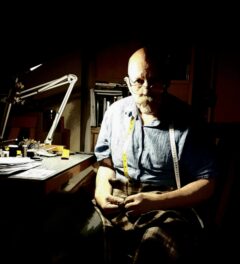
What a perfect explanation in simple terms …..thank you so much for it